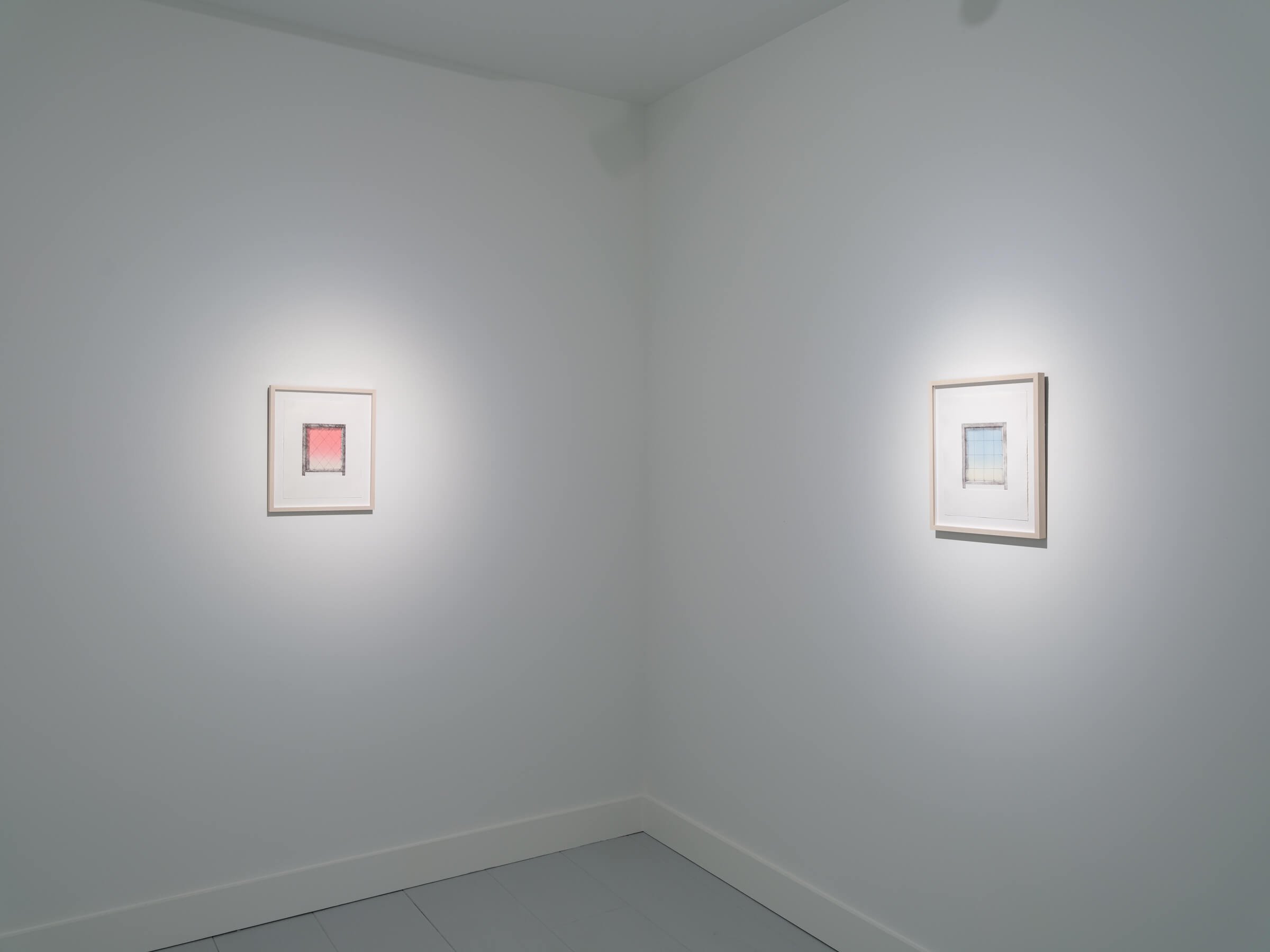Evan Halter
Specificities
September 14–October 27, 2024
Opening reception Saturday, September 14, 2024, 3–5 PM
Artist discussion Sunday, October 20, 11 AM
In his book Man and Nature: Or, Physical Geography As Modified by Human Action, George Perkins Marsh wrote “To the natural philosopher, the descriptive poet, the painter, and the sculptor, as well as to the common observer, the power most important to cultivate, and, at the same time, hardest to acquire is that of seeing what is before him.” That was in 1865. Over one hundred fifty years later, developing our ability to see in an age of overstimulation, interlaced with screens, advertisements, and ‘content,’ poses a significant challenge. Overstimulated psyches flit from image to image, regularly making split-second decisions over what deserves a moment of our time.
Intentionality can act as a remedy to these modern psychic ills. Through an odd but subtle form, a vacancy in an otherwise active field, or an implied trick of light, Evan Halter (b. 1990) creates contemporary still-life paintings that invite contemplative viewership and discovery. Often referencing historical works, he selects mundane objects—an insect, an architectural niche, florals, or a billow of fabric and emphasizes them in a voyeuristic way, leaving the viewer to fill in for themselves the gaps he creates. Devoted to his practice, Halter’s slow and layered approach to painting mimics the content of his work, navigating the realities of our mortal coils and pleasures.
A year and a half in the making, Turley is delighted to present Specificities, an exhibition of Evan Halter’s newest body of work.
Evan Halter, Letter Rack with Plumb Bob (After Samuel Dirksz van Hoogstraten), 2024, oil on canvas over wood panel, 48 x 42.5 inches
Evan Halter
Working primarily from sourced reproductions of artwork by historical figures—such as Cornelis Gysbrechts, Albrecht Dürer, and Ambrosius Bosschaert, among others—I render paintings that reveal portions of these artists’ work. My compositions are created from a combination of digital and paper collages from which I am able to make paintings that both alter the meaning of the referenced artworks and abstract their depictions. As this series continues I better understand its potential for expansion as I accumulate references and hone my material processes.
The origin of my use of historical quotation began when I came across the bodegónes paintings by Spanish artist Juan Sánchez Cotán. In Cotán’s work I found a crystallization of my interests in geometry, trompe l’oeil, and contemplative looking. In his book, Looking at the Overlooked, Norman Bryson speaks beautifully of Cotán’s early paintings, writing that they “exactly reverse the scale of values in which what is unique and powerful in the world is the preordained object of the gaze, while that which lacks importance is overlooked.” This kind of reprioritization of the gaze is what I like to think of as a “Still Life” approach to art making. Whether or not the objects depicted fall into the Still Life category, I believe Still Life is a lens through which our view of the world can be oriented away from the clamor and spectacle of contemporary culture and turned towards contemplative looking.
Throughout all of my work is an interest in painting’s ability to function in paradoxical states simultaneously. Of particular interest to me is the friction between illusory image space and the physical surface of a painting. A clear example of this friction is evident in my painting Letter Rack with Plumb Bob (After Samuel Dirksz van Hoogstraten). The image area of the painting is presented as strips of fabric reminiscent of Dutch letter rack paintings from the 17th century. Set within the silhouette of the fabric, a portion of a letter rack painting by Samuel Dirksz van Hoogstraten is visible. All of this is surrounded by areas of exposed canvas.
My goal is for the work to occupy a space in which it can recontextualize these familiar historical artworks, and at the same time, create something new that can act as a means to highlight the quiet and often overlooked moments in both art and life.
Learn more about Halter’s historical references:
Evan Halter, Cut/Through (After Ambrosius Bosschaert), 2024, oil and gesso on canvas, 48 x 42.5 inches
Evan Halter, Still Life with Moth, Shell, and Sphere, 2024, oil and gesso on canvas, 24 x 18 inches
Evan Halter (b. 1990 Cincinnati, OH; lives and works in Queens, NY) graduated with a BFA in Painting from the Art Academy of Cincinnati in 2013, and received his MFA from Rutgers University Mason Gross School of the Arts in 2016. Solo exhibitions of Halter’s work include: The New Iconographies, SPRING/BREAK Art Show, New York, NY (2021, two-person exhibition); Vanitas, The Java Project, Brooklyn, NY (2018); and Partitions, Clay St Press, Cincinnati, OH (2018). His work has also been included in numerous group exhibitions, such as: Echoes of Paradise, Jane Lombard Gallery, New York, NY (2024); What's the Point of Precision?, Ortega y Gasset Projects, Brooklyn, NY (2023); Various Flowers, Hirschl & Adler Modern, New York, NY (2023); Present in a Lonely Image, Alexander Gray Associates, Germantown, NY (2023); Knowing When, Turley Gallery, Hudson, NY (2022); Borrowing, Bolivar Art Gallery at the University of Kentucky, Lexington, KY (2022); This is not Surrealism, Dinner Gallery, New York, NY (2022); memoirs, Pablo’s Birthday, New York, NY (2020); The Hawt Show II, Rolando Anselmi Gallery, Atina, Italy (2020); and Here and Now, The Center for Contemporary Art, Bedminster, NJ (2020).
Halter has completed residencies at The Lighthouse Works on Fishers Island, NY (2021), the Banff Centre for the Arts in Alberta, Canada (2016), and The Advanced Painting Intensive, Columbia University School of the Arts, New York, NY (2013).
Evan Halter, The Glass Sphere (After Johannes Vermeer), 2024, oil on wood panel, 36 x 12 inches
Installation photography by Spencer House Studio



















